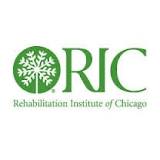Intermittent Hypoxia Elicits Prolonged Restoration of Motor Function in Human SCI
| Status: | Completed |
|---|---|
| Conditions: | Hospital, Orthopedic |
| Therapuetic Areas: | Orthopedics / Podiatry, Other |
| Healthy: | No |
| Age Range: | 18 - 65 |
| Updated: | 11/23/2013 |
| Start Date: | December 2010 |
| End Date: | October 2013 |
| Contact: | Randy Trumbower |
| Email: | randy.trumbower@emory.edu |
| Phone: | 404-712-5985 |
The goal of the study is to determine whether repeatedly breathing low oxygen levels for
brief periods (termed intermittent hypoxia) will improve limb function after spinal cord
injury. This idea stems from animal studies on respiration, in which investigators have
shown that mild intermittent hypoxia improves breathing in spinally injured rats. These
studies have shown that intermittent hypoxia induces spinal plasticity, strengthening neural
connections and motor neuron function within the spinal cord. Exposure to mild intermittent
hypoxia triggers a cascade of events, including increased production of key proteins and
increased sensitivity of spinal cord circuitry necessary for improved breathing.
The ultimate goal of this research is to assess the potential of mild intermittent hypoxia
as a therapeutic approach to stimulate recovery of limb function in human patients.
: The goal of the study is to determine whether repeatedly breathing low oxygen levels for
brief periods (termed intermittent hypoxia) will improve limb function after spinal cord
injury. This idea stems from animal studies on respiration, in which investigators have
shown that mild intermittent hypoxia improves breathing in spinally injured rats. These
studies have shown that intermittent hypoxia induces spinal plasticity, strengthening neural
connections and motor neuron function within the spinal cord. Exposure to mild intermittent
hypoxia triggers a cascade of events, including increased production of key proteins and
increased sensitivity of spinal cord circuitry necessary for improved breathing.
The investigators initially hypothesize that daily exposure to intermittent hypoxia for 7
consecutive days will improve limb function in rats and in humans with chronic spinal
injuries. First, the investigators will compare limb function in spinally-injured rats which
receive mild intermittent hypoxia treatment with rats that did not. The investigators will
measure grip strength and locomotor abilities in both groups before treatment and for
several months after treatment. The investigators will also examine the spinal cords of
these rats to look for the key proteins, which are indicators of spinal plasticity. The
investigators will use this information to guide the treatment protocols when the
investigators compare limb function in spinal-injured persons with and without intermittent
hypoxia treatment.
The second hypothesis is that combining intermittent hypoxia with locomotor training will
further improve limb function after spinal injury. To test this idea, the investigators will
compare limb function in spinally-injured rats which have received combined intermittent
hypoxia and treadmill training with rats which only received intermittent hypoxia or
locomotor training alone. The investigators will examine key proteins in the spinal cords of
these rats to determine whether the combination of hypoxia and training further alters these
indicators of plasticity. The investigators will also compare limb function in
spinally-injured humans who receive both intermittent hypoxia and locomotor treadmill
training with those who receive either treatment alone.
The ultimate goal of this research is to assess the potential of mild intermittent hypoxia
as a therapeutic approach to stimulate recovery of limb function in human patients.
Inclusion Criteria:
- medical clearance to participate
- lesion below C5 and above T12 with non-progressive etiology
- classified as motor-incomplete
- injury greater than 12 months
- ambulatory with minimal assistance
Exclusion Criteria:
- Concurrent severe medical illness (i.e., infection, cardiovascular disease,
ossification, recurrent autonomic dysreflexia, unhealed decubiti, and history of
cardiac or pulmonary complications)
- Pregnant women because of the unknown affects of AIH on pregnant women and fetus
- History of seizures, brain injury, and/or epilepsy
- Diagnosed with obstructive sleep apnea
- Undergoing concurrent physical therapy
- Any contraindications to EMG testing procedures (skin sensitivity)
- Any contraindications to passive movement of the limbs (e.g., joint immobility,
hemodynamic instability)
- Score of < 24 on Mini-Mental Exam
We found this trial at
2
sites
Click here to add this to my saved trials
Rehabilitation Institute of Chicago The Rehabilitation Institute of Chicago (RIC) is an independent, 501(c)3, non-profit...
Click here to add this to my saved trials
